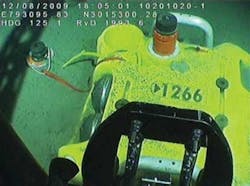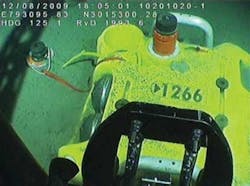Lower Tertiary remains an important exploration zone
The only question of further discoveries is “When?”
Gene Kliewer
Technology Editor
Subsea & Seismic
The Lower Tertiary oil and gas play in the Gulf of Mexico remains largely undeveloped, despite the high profile it carries. It also is a relatively recent play given the difficulties encountered in its exploration and development.
The Lower Tertiary is about 175 mi (280 km) offshore, and estimated at 80 mi (125 km) wide, and as much as 300 mi (480 km) long. Water depths are from 5,000 to 10,000 ft (1,525 to 3,950 m). Production targets are at depths of 10,000 to 30,000 ft subsea (1,525 to 9,140 m).
The Lower Tertiary play is south and west of the Miocene area in the Gulf of Mexico, and consequently in deeper water.
The Tertiary trend dates from 66 to 38 million years. Within the Lower Tertiary, the Lower Wilcox portion is sheet to amalgamated-sheet sands considered to be part of a regional basin floor fan system.
The late Paleocene to early Eocene (Wilcox equivalent) reservoirs are considered to be laterally extensive sheet sands that were deposited in deepwater. These reservoirs are distributed across an area largely covered by the allochthonous Sigsbee salt canopy. It is this canopy that causes extra problems beyond just the water depth and well depth required to reach the reservoirs.
These exploration plays depend on understanding the updip fluvial/deltaic stratigraphic architecture and the potential for partitioning of reservoir-quality sandstones across the depositional shelf into the slope and basin floor environments.
Thunder Horse and Tahiti, for example, drove exploration and development into the subsalt Miocene and paved the way for finds such as Perdido and Cascade/Chinook further out into the GoM and the continental shelf. Discoveries have been announced on multiple prospects in the Walker Ridge and Alaminos Canyon protraction areas, and in the Keathley Canyon protraction area.
Technological improvements in seismic data acquisition and interpretation are the major – if not the main – contributors to facilitating the play to date. Subsurface salt bodies present the largest obstacle to Lower Tertiary exploration. Traditional seismic survey techniques can be stymied by these salt structures. While “looking” below the salt remains a challenge, wide-azimuth data acquisition techniques and new data interpretation algorithms have made valuable headway in solving the riddles of the salt.
Wide-azimuth towed streamer data provides an increase in the data required to eliminate noise from the salt and to better define subsalt structures through accurate velocities. The greater understanding provided by 3D visualization and interpretation is necessary for Lower Tertiary success. The strength of volume interpretation software is its ability to animate and manipulate data so as to differentiate noise from signals and to identify multiples.
History says additional steps still will be needed to deal with the salt impact on seismic surveys and interpretations. Looking into the salt, identifying its lower limits, and picking targets beneath the salt are areas for further technological development.
Recognizing the lower limit of a salt structure is important for drilling, too. Just beneath the Lower Tertiary salt is a high pressure zone. A study by IHS/GPT (GeoPressure Technology Ltd.) found the overpressure in existing Lower Tertiary Wilcox wells differs dramatically. The overpressures accounted for ranged from 9.1 ppg to 15.7 ppg equivalent mud weight across not only the Wilcox, but also the Miocene. This sudden transition to a zone of significantly higher pressure is hard enough to manage when it is expected. As a surprise, it can be a serious problem.
Why all the interest in the Lower Tertiary? The upside potential for recoverable reserves could reach 15 Bbbl, according to several estimates made on the basis of drilling already performed. So, with more exploration there is every expectation of more reserves. And, the Lower Tertiary may not be the last new play in the Gulf of Mexico.
Upper Cretaceous Tuscaloosa and Woodbine sandstones are reservoirs in several large onshore fields with reserves in excess of 8 Bboe. The deposition and stratigraphic geometries of these clastic depositional systems are similar to those in the Lower Tertiary Wilcox. An Upper Cretaceous deepwater fan system is also present in the GoM. Analysis of the source sediment lithologies and geometry of the updip deltas, coupled with regional seismic comparisons and data from onshore wells, suggest that this play may have a better reservoir quality than the Wilcox and could be the next major exploration play in the Gulf of Mexico.
Offshore Articles Archives
View Oil and Gas Articles on PennEnergy.com

